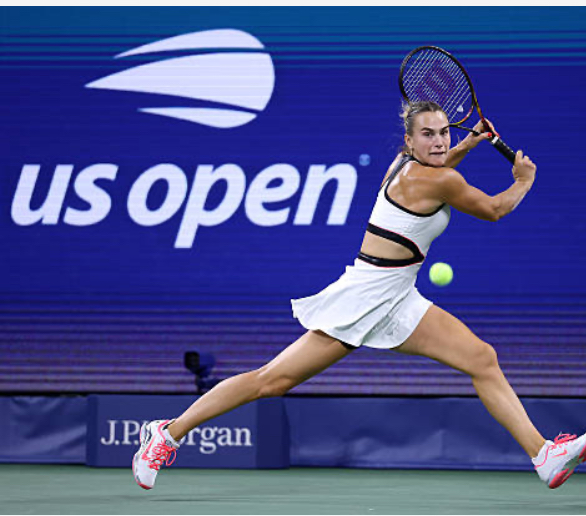Aryna Sabalenka isn’t the type to sit down and watch replays of her own matches. Why? Because it’s just too much. Too intense.
The 27-year-old world No.1 is a walking storm on court — one of the fiercest ball strikers on the WTA Tour. Her grunts are almost as thunderous as her forehands, her emotional outbursts raw and unfiltered. She screams at herself, shouts at her box, smashes rackets… in short, she leaves nothing behind. And while some see chaos, for opponents she’s often a mountain that feels impossible to climb.
So where does someone who plays with that much ferocity find an outlet? For Sabalenka, the answer lies in social media. Scroll through her Instagram and you’ll see the contrast: Aryna dancing, making cocktails for her team, striking poses in a bikini against the Aegean Sea. “I feel like I’m an open book right now,” she admitted in Wuhan, her diamond earrings sparkling under the media lights. “People always ask, ‘what would surprise us about you?’ Honestly, nothing. I put it all out there.”
A Lighter Side to a Heavy Game

Sabalenka is currently chasing a fourth title at the Dongfeng Voyah Wuhan Open — a tournament she has dominated, lifting the trophy in 2018, 2019, and again last year. But she knows her “super aggressive” playing style can sometimes make her seem one-dimensional to fans. That’s why she’s made it a mission to let them see the lighter, more playful Aryna off the court.
“I want to feel support in the stadiums,” she explained. “To have that connection, I need to share myself. I need people to see who Aryna really is.”
That approach is working. Her Instagram following has ballooned to 3.8 million, proof that her openness resonates. But social media also comes with its inevitable dark corners.
Facing Hate — and Laughing It Off
“Throughout my career, I’ve faced a lot of hate, and for all sorts of reasons,” she said. Some of it is from gamblers frustrated with results, some because of her Belarusian nationality in the context of the war in Ukraine. Sometimes, out of curiosity, she even clicks through to see who’s sending the abuse. The shock? “It’s often mothers,” she revealed. “They send these horrible messages. Or people who seem to be doing nothing with their lives, just tearing down others who are trying to inspire or motivate the next generation.”
Her solution is brutally simple: laugh it off. “I take it as a joke. It shows how terrible they are as people. I think every player should treat it that way and not let themselves sink into that dark space.”
Not every top player takes the same approach. World No.2 Iga Swiatek, very much Sabalenka’s opposite in personality, prefers staying out of the spotlight entirely. On handling online hate, she was blunt: “Not reading it is best. But sometimes you see it anyway, and every athlete goes through that. It’s the backstage stuff no one talks about.”
Experience, Confidence, and Tiger Claws
Sabalenka’s confidence to shrug off negativity seems tied to her growing comfort with her own identity. Just this week, she had Wuhan fans in stitches by performing a “tiger dance” while wearing claws and playful headbands.
That willingness to show personality hasn’t come overnight. “Everything has come with experience,” she reflected. Over the last three years, she’s reached seven Grand Slam finals, winning four of them — a résumé that screams elite consistency. “I’ve learned so much about handling emotions, keeping myself motivated, and being comfortable in my position.”
For some, TikTok dances and tiger-ear headbands might look silly. But for Sabalenka, they’re an essential release — her way of exhaling after playing tennis at the sport’s most punishing level. And maybe that’s the secret. On court she’s fire and fury; online, she lets herself breathe.
suggested for you:
